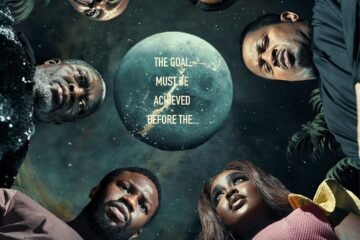The abundance of unfavourable critiques aimed at Nollywood would have dealt a severe blow to its self-esteem, were it a human being.
Nollywood, the bustling titan of the African film industry, often finds itself subject to hasty dismissal. Even some Nigerian filmmakers have openly confessed their reluctance to engage with Nollywood productions, viewing it as a stagnant and seemingly irredeemable entity.
Though I can empathise with these sentiments, I’m compelled to challenge the impulse to condemn the industry without deeper reflection. This disturbs me because, in my view, criticism should invariably stem from a foundation of knowledge and genuine affection. Contrary to widespread perception, I firmly maintain that authentic criticism must be born out of a genuine love for the subject at hand and not be driven by ulterior motives.
“…authentic criticism must be born out of a genuine love for the subject at hand and not be driven by ulterior motives.”
As an ardent student of the film industry, a pursuit that continues to captivate my interest, I have gleaned that beyond the superficial technological hurdles that occasionally beset the industry, the root cause of its apparent problems lies in the realm of storytelling.
It became clear to me that our cinematic prowess was not solely determined by our ability to craft compelling visuals or conjure awe-inspiring set designs. Rather, it hinged on the art of storytelling itself.
This struck me during my recent participation in a developmental workshop. It was here that I realised our films might not always achieve pristine execution, but the crux of our challenges consistently revolved around storytelling.
Storytelling, a social and cultural practise that spans time and geography, involves the recounting of narratives, often infused with improvisation, theatricality, and embellishment. Every culture possesses its own repository of stories and narratives, passed down for the purposes of entertainment, education, cultural preservation, or moral edification. Key elements such as plot, characters, and narrative perspective constitute the core of storytelling, and this term encompasses both oral traditions and the techniques employed across various media to unravel a narrative’s essence.
In the case of Nollywood, a persistent debate rages on about the types of stories we ought to tell. The absence of a coherent consensus on this front has contributed to our sluggish progress. We’ve managed to muddle through thus far, but the public’s discernment is sharpening, and cinematic literacy is on the rise. Consequently, there is mounting dissatisfaction with what some deem “subpar” films.
It is imperative to acknowledge that Nigeria, like many African nations, traces its storytelling roots to the oral tradition, an ancient practise that predates the advent of the written word and the internet age.
It is imperative to acknowledge that Nigeria, like many African nations, traces its storytelling roots to the oral tradition, an ancient practise that predates the advent of the written word and the internet age. These oral traditions were the conduit through which natural phenomena were elucidated, and they gave birth to Genesis myths and pantheons of deities. Storytellers, revered as entertainers, healers, educators, spiritual guides, and custodians of cultural wisdom, wove narratives through songs, poetry, chants, and dance, etching their tales into the annals of cultural history.
For a Nigerian storyteller, it is paramount to master the arts of emotional and logical manipulation. Historically, our focus has leaned heavily towards emotional manipulation, delivering raw, unadulterated emotions to our audience.
In a world where boundless possibilities abound, where profound satisfaction is the ultimate goal, and where the audience is the ultimate judge and reward, a writer becomes a virtuoso of emotions and reason. A well-crafted narrative must possess a rhythm that beguiles the senses, evoking emotions that span the spectrum from sheer elation to spine-tingling dread. Moreover, it must be underpinned by a profound human idea, one that complements rather than overpowers the narrative.
If we scrutinise these facets more closely, we’ll find that contrary to prevailing misconceptions, our challenges do not lie primarily with the actors, writers, or directors – we have a wealth of talent in these areas. What we genuinely lack are compelling stories and a comprehensive grasp of how to tell them. A concerted effort to address these deficiencies promises to usher in a transformative era for our industry.
Perhaps, with the arrival of films such as Erisi’s “Eyimofe,” Obasi’s “Mami Wata,” and the upcoming project by Babatunde Apalowo, “All The Colours of the World are Between Black and White,” there’s a glimmer of hope that these issues are gradually being grasped. However, only time and additional projects can truly reveal the extent of our progress.








